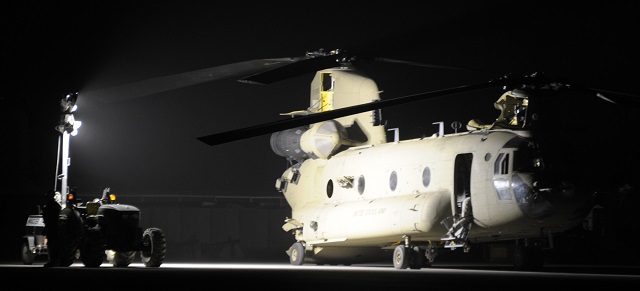A top US Army acquisition executive has given the service approval to proceed with the Block II Chinook programme, a long-term effort aimed at replacing or rebuilding today’s tandem-rotor Boeing CH-47F and MH-47G fleets in the 2020s.
Army aviation officials were aiming to issue a request for proposals for the Block II initiative in early 2016, and a successful meeting this week with outgoing army weapons buyer Heidi Shyu has kept that process moving.
“It is on track; it’s through the [alternative systems review],” says Maj Gen Michael Lundy, commanding general of the US Army Aviation Center of Excellence at Fort Rucker, Alabama.
“It has been approved as a plan, and we’re on progress to make that a programme of record. The [analysis of alternatives] has been completed and we have made a choice on the direction we’re going.”
The army has been working with Boeing for some time to develop various components that could be included in the final design, such as the extra-lift advanced Chinook rotor blade (ACRB), which will fly in 2016.
The competition in 2016 would lead into a contractor downselect, expected in 2017.

US Army
The meeting with Shyu comes ahead of the Pentagon’s fiscal year 2017 budget release in February, indicating that the programme will be resourced in the army’s five-year funding proposal.
Lundy says the plan includes new or remanufactured Chinook airframes for both regular and special forces units. The latter currently operates the multi-mission MH-47G. “They are going to get some new airframes out of it,” says Lundy, speaking at an army aviation event in Washington on 14 January.
The Chinook is one of Boeing’s top military programmes, with 57 examples delivered from its Philadelphia, Pennsylvania site in 2015.
It expects the heavy-lift rotorcraft to remain in front-line service until to 2060 – around 100 years since its introduction – through modernisation projects such as the Block II upgrades.
The company is also working with Sikorsky on the SB-1 Defiant joint multi-role demonstrator, targeted at the army’s mid-size future vertical lift (FVL) requirement, which does not encompass a Chinook replacement at present.
Source: FlightGlobal.com
















